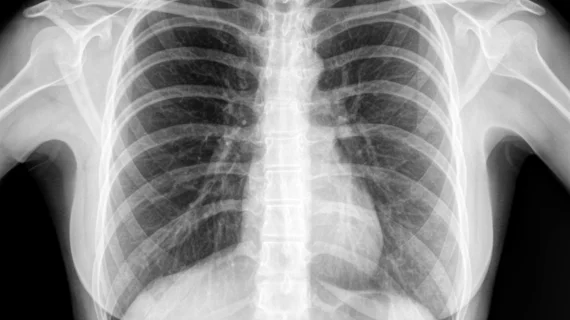Technologists show they can interpret chest x-rays as well as radiologists
Technologists, with proper postgraduate training, can interpret chest x-rays at a high level, comparable to radiologists, according to a new study published in Academic Radiology.
The authors selected a consecutive series of adult chest x-rays performed at the same facility from April 1, 2011, to March 30, 2012. All exams were performed after a referral from a hospital-based clinician. Ten radiologists and 11 trained technologists interpreted the exams. Jack-knife alternate free-response receiver operating characteristic curve methodology was used to compare the studies themselves.
Overall, the authors found that the diagnostic accuracy of the technologists “was noninferior to the consultant radiologists.”
“There was no apparent difference in diagnostic accuracy between the consultant radiologists and reporting radiographers for different current annual workload and experience,” wrote Nick Woznitza, PhD, with the department of radiology at Homerton University Hospital in London, and colleagues.
The authors added, however, that the “small number of participants in each subset prevented further statistical analysis.” But they still see a great deal of value in their research.
“That both the number of cases and the number of observers in the current study are comparable to the total sum of the previous literature is a strength of the current study and suggests that the results are generalizable to a wider population of trained reporting radiographers,” the authors wrote. “Reporting radiographers could contribute as part of a sustainable strategy to meet additional clinical demand and diagnostic capacity requirements.”

